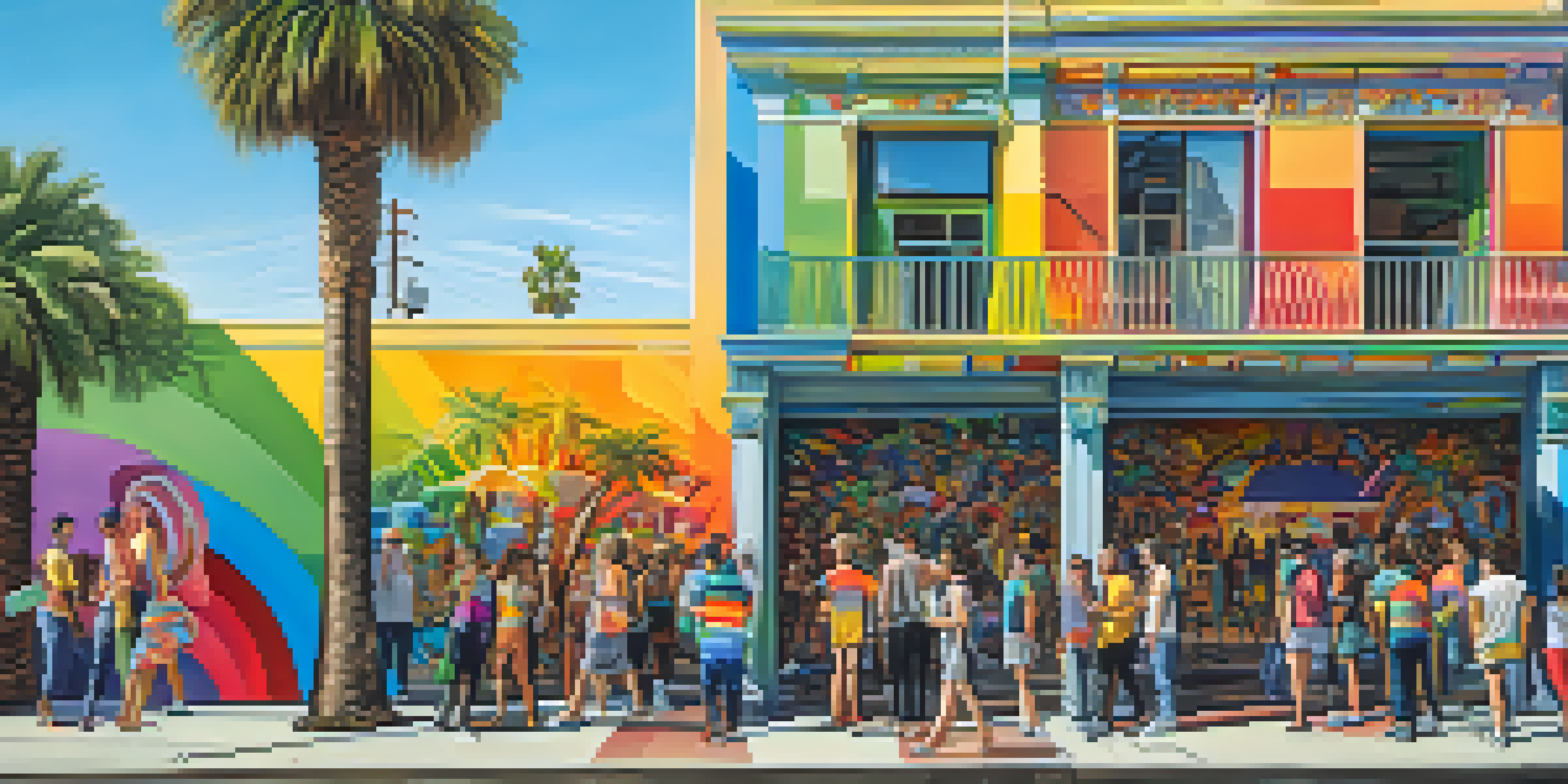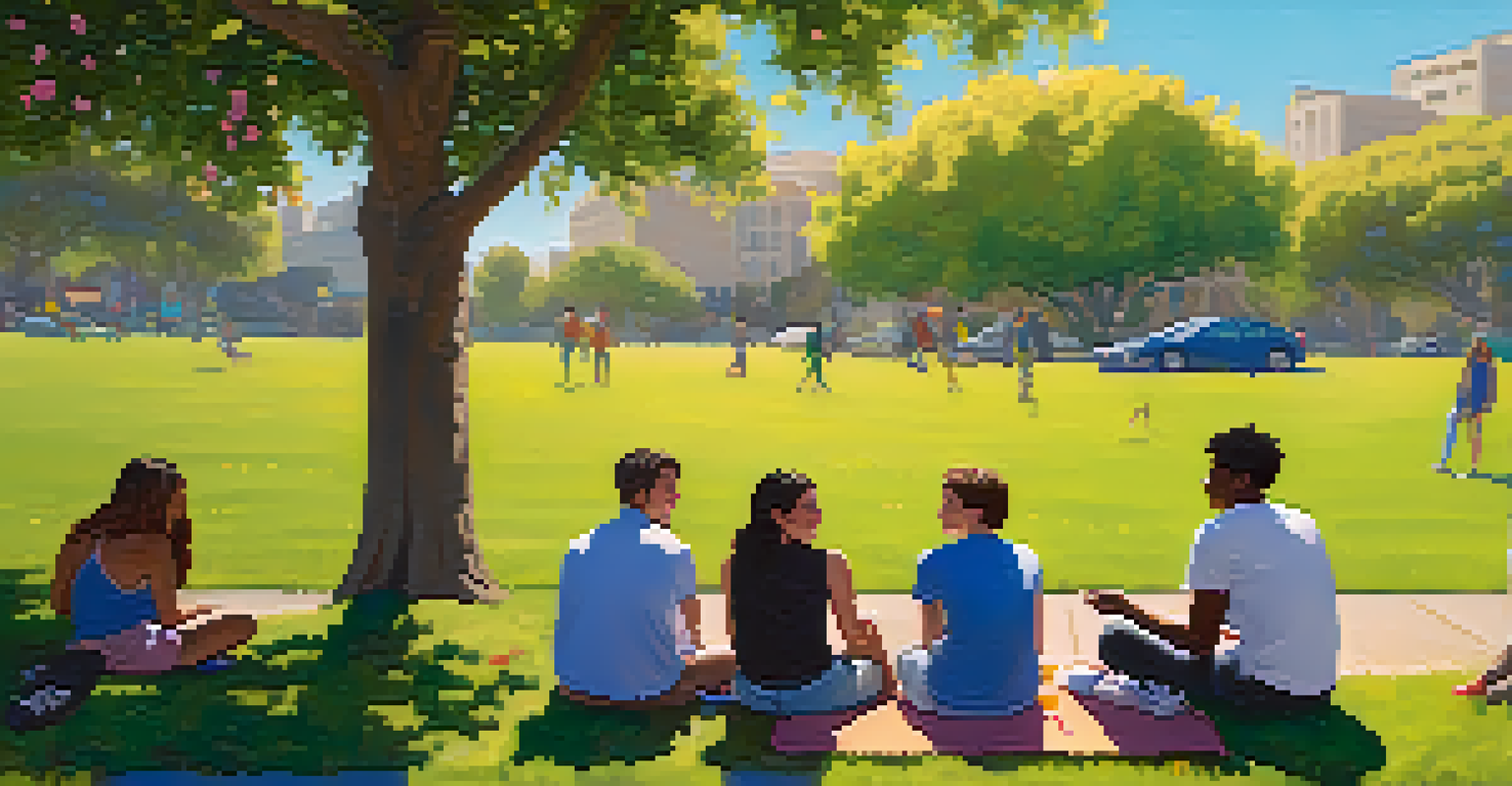The Growth of LGBTQ+ Youth Programs in Los Angeles

Understanding LGBTQ+ Youth Needs in Los Angeles
LGBTQ+ youth in Los Angeles are a vibrant and diverse community, yet they often face unique challenges. Many experience discrimination, mental health issues, and a lack of support from their peers and families. Recognizing these needs is crucial for developing effective programs that empower these young individuals.
Youth is the future of our nation. We must ensure that all young people, regardless of their sexual orientation or gender identity, have access to the resources they need to thrive.
In many cases, LGBTQ+ youth may feel isolated or misunderstood, leading to feelings of anxiety or depression. Programs that address these mental health concerns provide safe spaces where youth can express themselves freely. This understanding is the first step toward creating meaningful support systems.
Furthermore, the importance of inclusive education cannot be overstated. Schools that acknowledge and celebrate diversity help foster acceptance and understanding among all students, ultimately benefiting everyone involved. By meeting the needs of LGBTQ+ youth, we pave the way for a more inclusive society.
The Historical Context of LGBTQ+ Youth Programs in LA
The evolution of LGBTQ+ youth programs in Los Angeles can be traced back to the 1980s, a time when visibility and activism were gaining momentum. Organizations began to emerge, focusing on the unique issues faced by LGBTQ+ youth. This historical context is essential to understanding the progress made over the years.

Initially, many programs were grassroots efforts, driven by community members who recognized the urgent need for support. These pioneers laid the groundwork for today's more structured organizations, which continue to advocate for the rights and well-being of LGBTQ+ youth. Their legacy is felt in the thriving programs available today.
LGBTQ+ Youth Face Unique Challenges
Many LGBTQ+ youth in Los Angeles struggle with discrimination, mental health issues, and a lack of support from their peers and families.
As society has become more aware of LGBTQ+ issues, funding and support for these programs have increased significantly. This shift has allowed for a wider reach and more comprehensive services, making a profound difference in the lives of countless young people in Los Angeles.
Key Organizations Leading the Charge
Several organizations in Los Angeles have taken the lead in providing essential resources and support for LGBTQ+ youth. One notable example is The Trevor Project, which focuses on crisis intervention and suicide prevention. Their work has saved lives and created a sense of hope for many young individuals.
The more we learn about each other, the more we can understand and support one another. Inclusion is not just a policy; it's a necessity for our survival.
Another key player is The Los Angeles LGBTQ Center, which offers a variety of services including counseling, health care, and support groups specifically tailored for LGBTQ+ youth. Their comprehensive approach addresses multiple facets of young people's lives, fostering holistic development.
These organizations not only provide services but also advocate for policy changes that benefit the LGBTQ+ community. By working together, they create a powerful network of support that amplifies the voices of young people and ensures their needs are met.
Impact of Community Support on LGBTQ+ Youth
Community support plays a pivotal role in the development of LGBTQ+ youth programs. When local businesses, schools, and families rally around these initiatives, they create an environment where youth feel accepted and valued. This support system can significantly boost the self-esteem and mental health of LGBTQ+ individuals.
Moreover, community engagement fosters allyship, which is essential for dismantling stigma and discrimination. Allies can help create safe spaces, advocate for LGBTQ+ rights, and educate others about the importance of inclusion. This collective effort enhances the overall impact of youth programs.
Community Support is Essential
Community engagement fosters allyship and creates a supportive environment that boosts the self-esteem and mental health of LGBTQ+ youth.
As more communities embrace diversity, LGBTQ+ youth are more likely to thrive. Supportive environments provide them with the courage to express their identities, build relationships, and pursue their goals without fear of judgment or rejection.
The Role of Schools in Supporting LGBTQ+ Youth
Schools are often the first places where LGBTQ+ youth seek acceptance and support. Implementing inclusive policies and programs within educational settings is vital for fostering a sense of belonging. Safe spaces, such as LGBTQ+ clubs, encourage students to connect with peers who share similar experiences.
Educators play a key role in creating an inclusive atmosphere. By receiving training on LGBTQ+ issues, teachers can better support their students and address bullying effectively. This proactive approach helps build a culture of respect and understanding within the school community.
Additionally, integrating LGBTQ+ topics into the curriculum can promote awareness and empathy among all students. When young people learn about diverse identities, they become more accepting and less likely to engage in discriminatory behavior, ultimately benefiting everyone.
Challenges Facing LGBTQ+ Youth Programs Today
Despite the progress made, LGBTQ+ youth programs still face significant challenges. Funding can be inconsistent, which limits the resources available for outreach and support services. This uncertainty can hinder the ability of organizations to effectively serve their communities.
Moreover, stigma and discrimination continue to be persistent issues. Some LGBTQ+ youth may still feel hesitant to seek help due to fear of judgment or rejection. Overcoming these barriers requires ongoing education and advocacy to normalize the conversation around LGBTQ+ identities.
Future Holds Promise for Programs
With increasing awareness and innovative approaches, the future of LGBTQ+ youth programs in Los Angeles looks promising and impactful.
Lastly, the impact of social media cannot be overlooked. While it can provide support and community, it can also expose youth to harmful messages and cyberbullying. Programs must adapt to these changing dynamics, ensuring that they provide not only offline support but also online resources.
The Future of LGBTQ+ Youth Programs in Los Angeles
Looking ahead, the future of LGBTQ+ youth programs in Los Angeles is filled with potential. As awareness grows and societal attitudes evolve, there is an opportunity for even greater support and resources. Continued investment in these programs will be crucial for their sustainability and impact.
Innovative approaches, such as virtual support groups and online educational resources, can expand the reach of programs. This flexibility allows organizations to connect with youth who may not have access to in-person services, ensuring that help is available to all who need it.

Ultimately, the goal is to create a society where LGBTQ+ youth feel not only accepted but celebrated. By fostering a culture of inclusivity, we can empower young individuals to thrive and contribute positively to their communities, paving the way for a brighter future for all.